When Leica launched the SL2-S mirrorless camera in December of last year, they teased many notable improvements and features which would come via a firmware update. And today, Leica has delivered on that promise with a massive update to photo and video features alike. The changes are far reaching, from autofocus performance to new metering modes, additional video codecs, new video capture tools and much more. Keep reading for a full breakdown of all the new features and changes below. Also, you can download Leica's instruction manual for the new firmware v2.0 here.
Download SL2-S Firmware v2.0
To download the firmware file, simply click the button below. You'll need to drag and drop the downloaded firmware file onto an SD card which was freshly formatted in the SL2-S, then insert the card into your Leica SL2-S with a fully charged battery. Navigate to the Camera Information menu to access the firmware update option. Don't try to open the firmware file on your computer – just copy it on to the SD card into the root directory.
New Features
New Autofocus algorithm for improved eye/face/head/body recognition and focus tracking
Faster, more consistent tracking of moving subjects to consistently capture fast-pace action. Face/Body Detection worked fairly well before for slow-moving subjects. With an updated algorithm, subjects are identified and tracked far more fluidly. Also, the camera can now more successfully lock focus on fast-moving objects, like cars, wildlife, kids and pets, where previously the results were hit-and-miss.
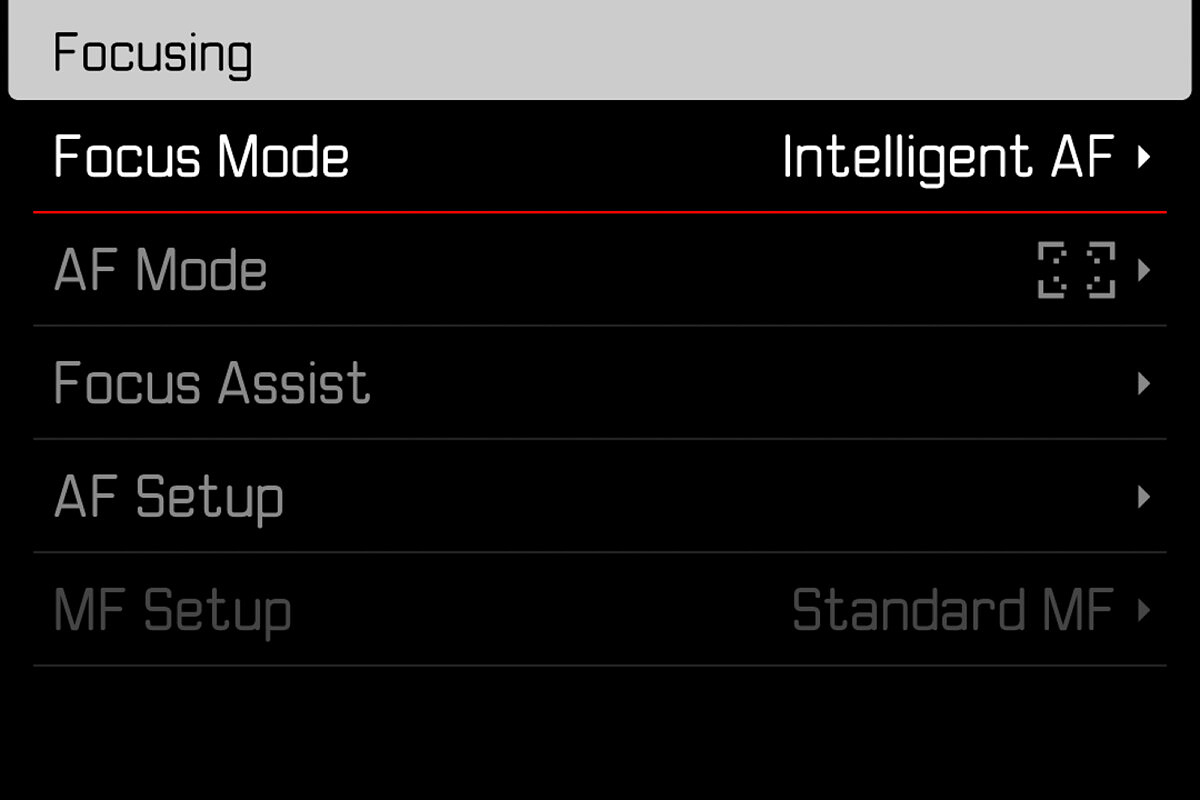
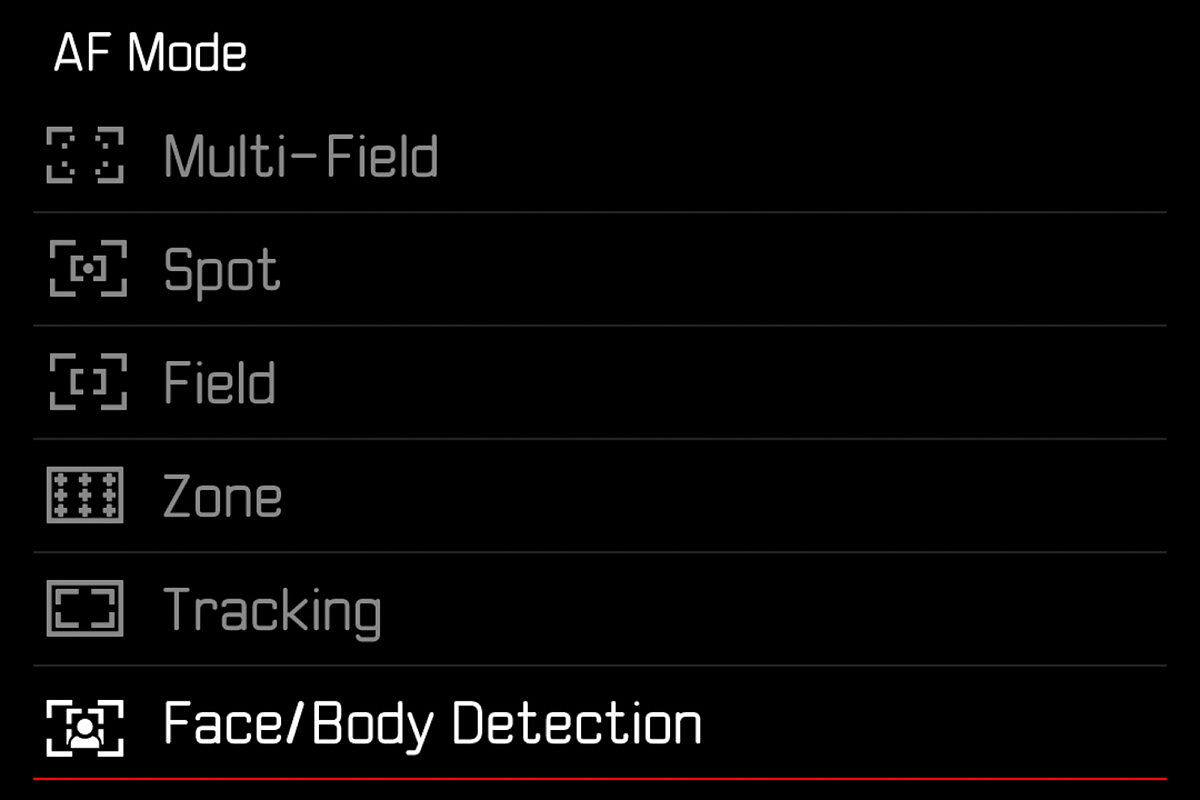
Internal 10 Bit 4K/60p & 50p with HEVC video compression (H.265)
By utilizing more efficient H.265 HEVC (High Efficiency Video Codec) compression, 4K video now takes up 25-50% less card/drive space while offering the same video quality as H.264 encoding. The only downside here is that older or lower-powered computers may struggle during video editing. If you have a modern system, the CPU and/or GPU typically offer hardware decoding.
Long-GOP recording for 10 Bit codecs with 150 –200 MB/s
Similar to the utilization of H.265 HEVC compression, Leica has switched from All-Intra to Long-GOP for 4K framerates higher than 29.97 fps in order to maximize SD card storage space for video. For 10-bit video, the data rate is 200 Mbps and 150 Mbps for 8-bit recording. Even though the data rate has been cut in half, the quality remains the same. Instead of capturing every frame as in All-Intra, the Long-GOP method utilizes key frames to encode an entire frame, then uses a series of delta frames which only record the changes from one frame to the next. During playback, your video editing software reassembles the video using these keyframes and delta frames. The process saves space since it's not recording redundant, non-changing data between keyframes. If you prefer to use All-I, Leica still provides the choice between L-GOP and All-I for 4K 29.97 frame rates and slower.
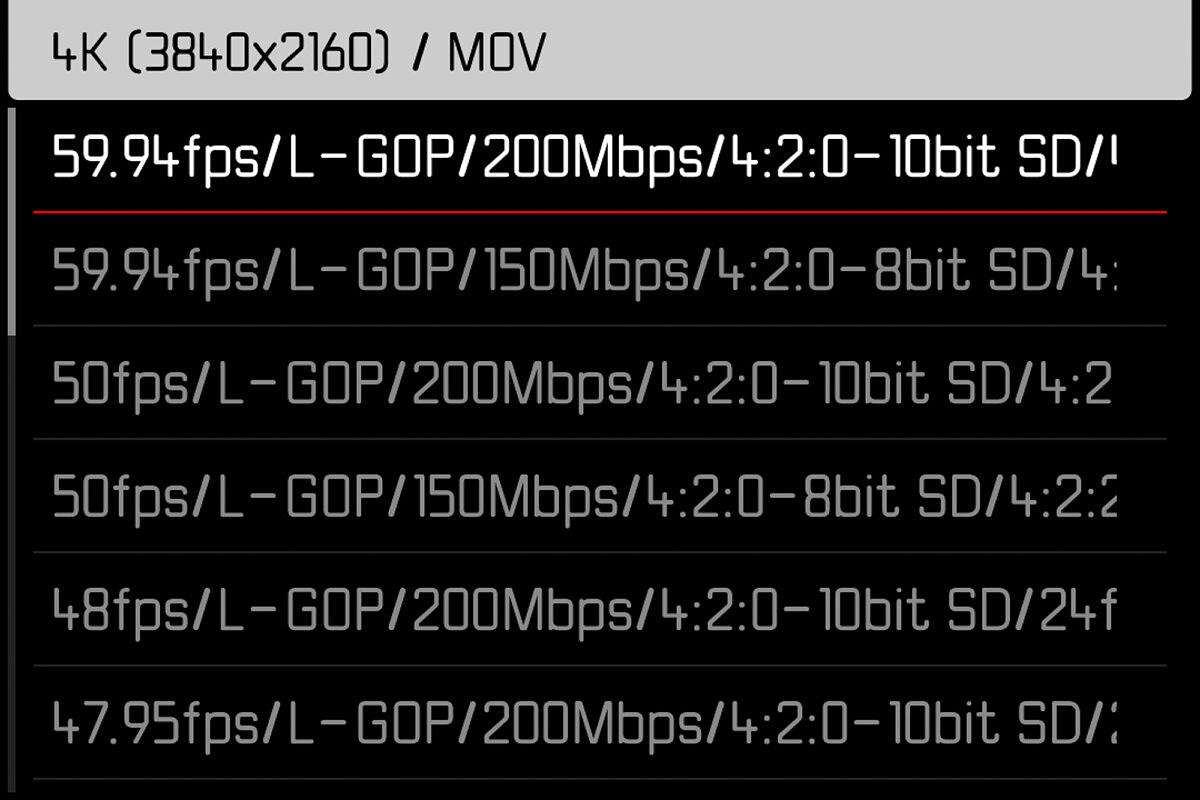
Segmented Video
Videos are separated into individual files as you record, so that in the event of an SD card failure you'll never lose more than one minute of footage. While this feature can certainly avoid a catastrophic file corruption for long recording sessions, some may not want to deal with an SD card full of one minute video clips that need to be joined in editing.
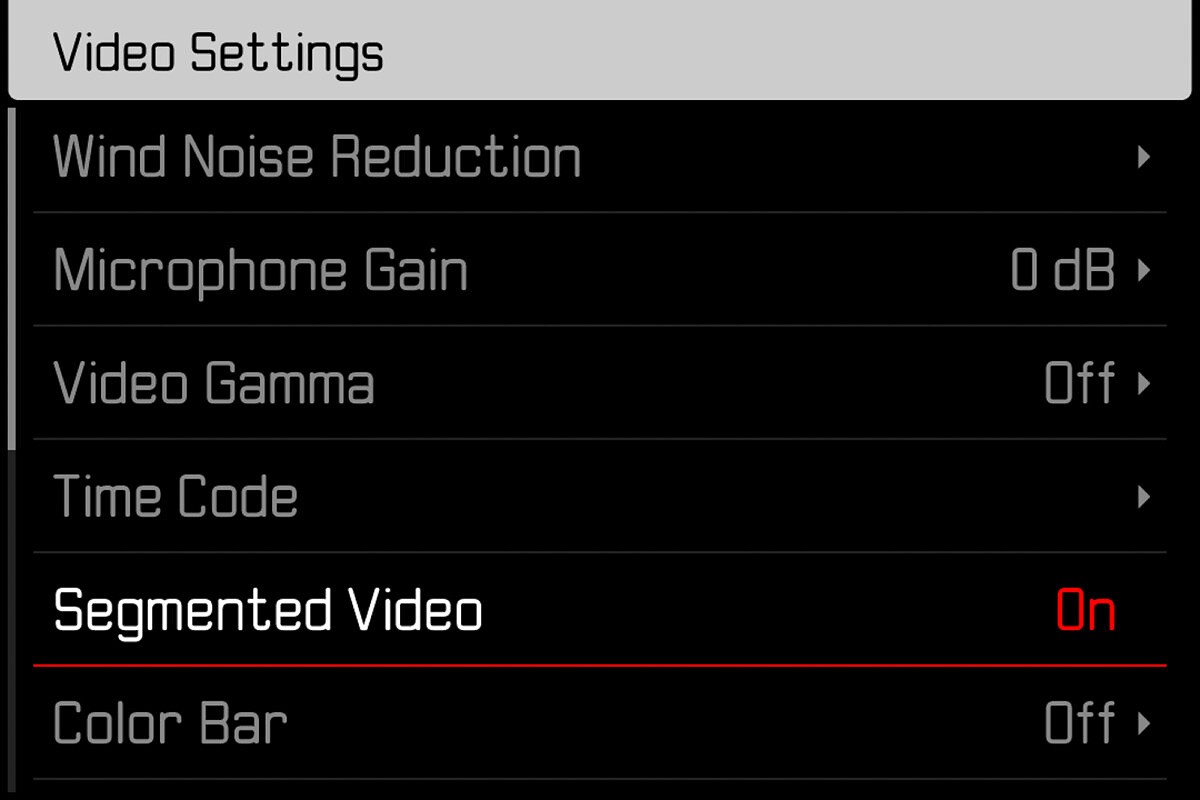
Individual Viewing-LUT upload function
In addition to the two built-in LUTs (Natural and Classic), you can now import your own custom LUTs and recall them for viewing when shooting in L-Log Gamma. This can aid greatly during shooting for pre-visualizing color grading and tonality, especially if you are trying to get a particular look to the footage. Here's how to find the new options.
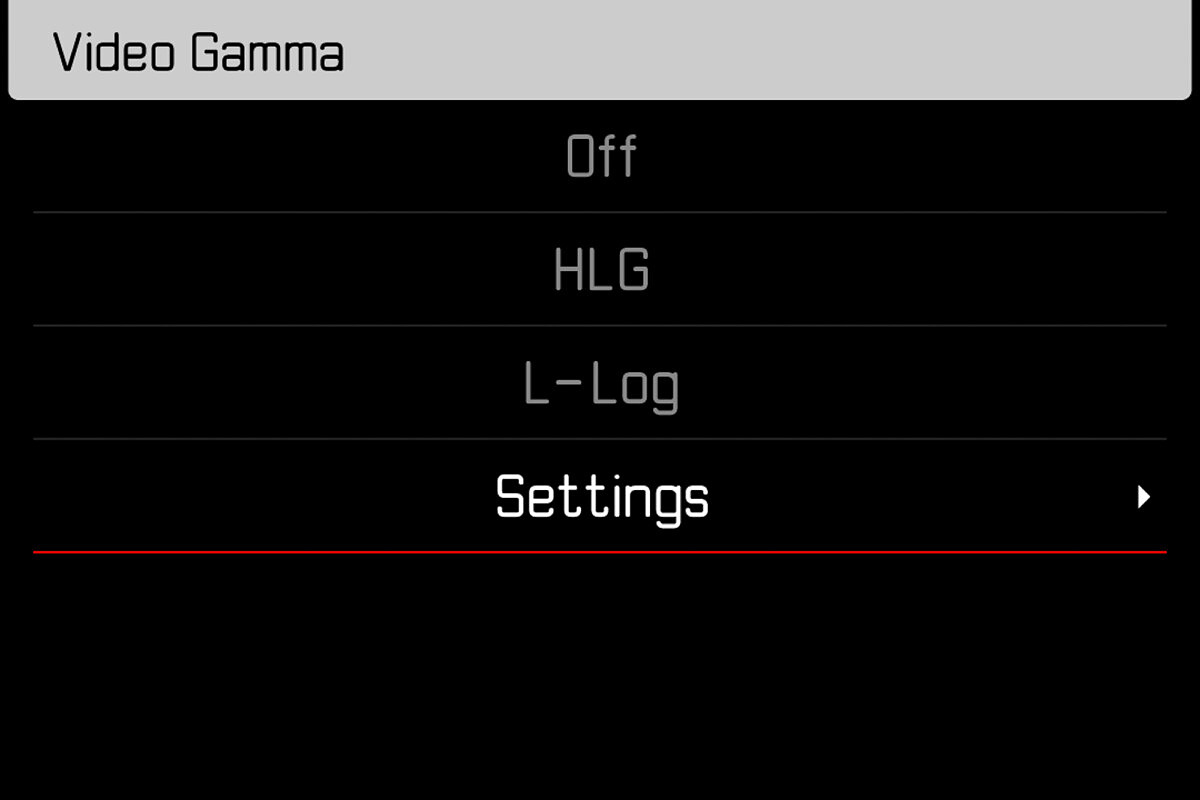
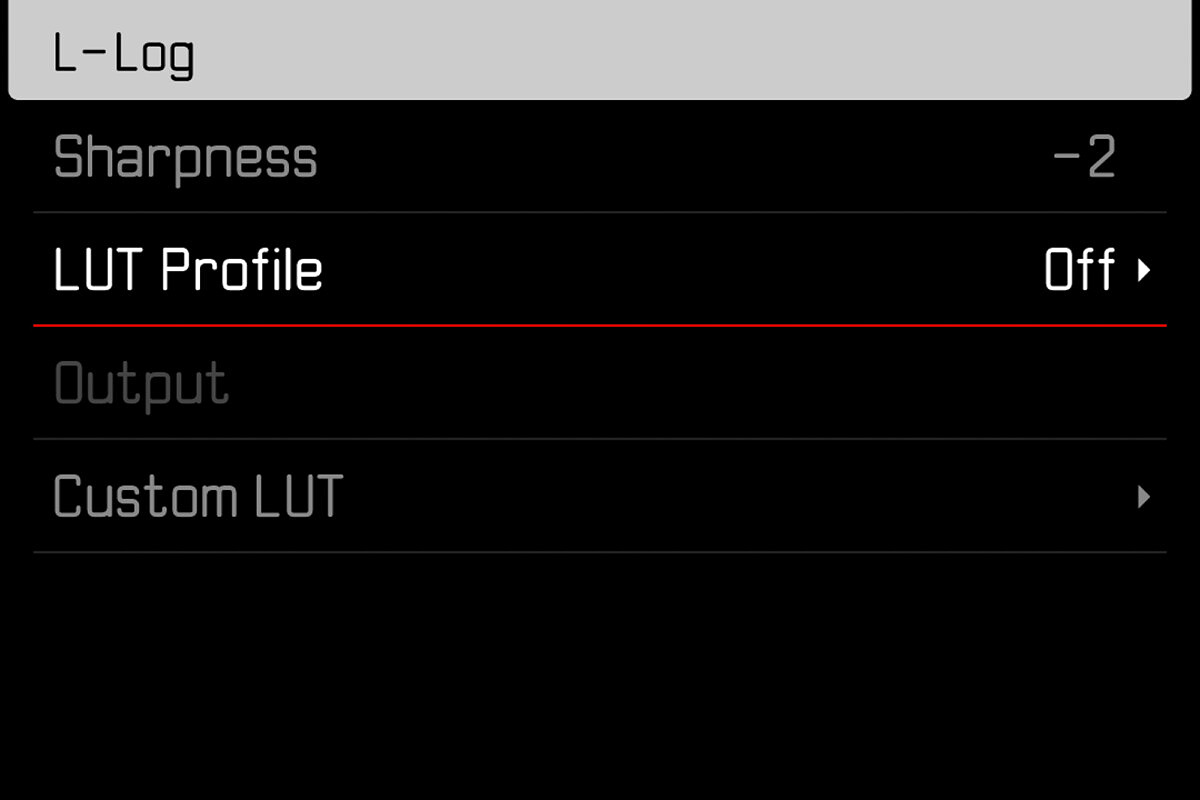
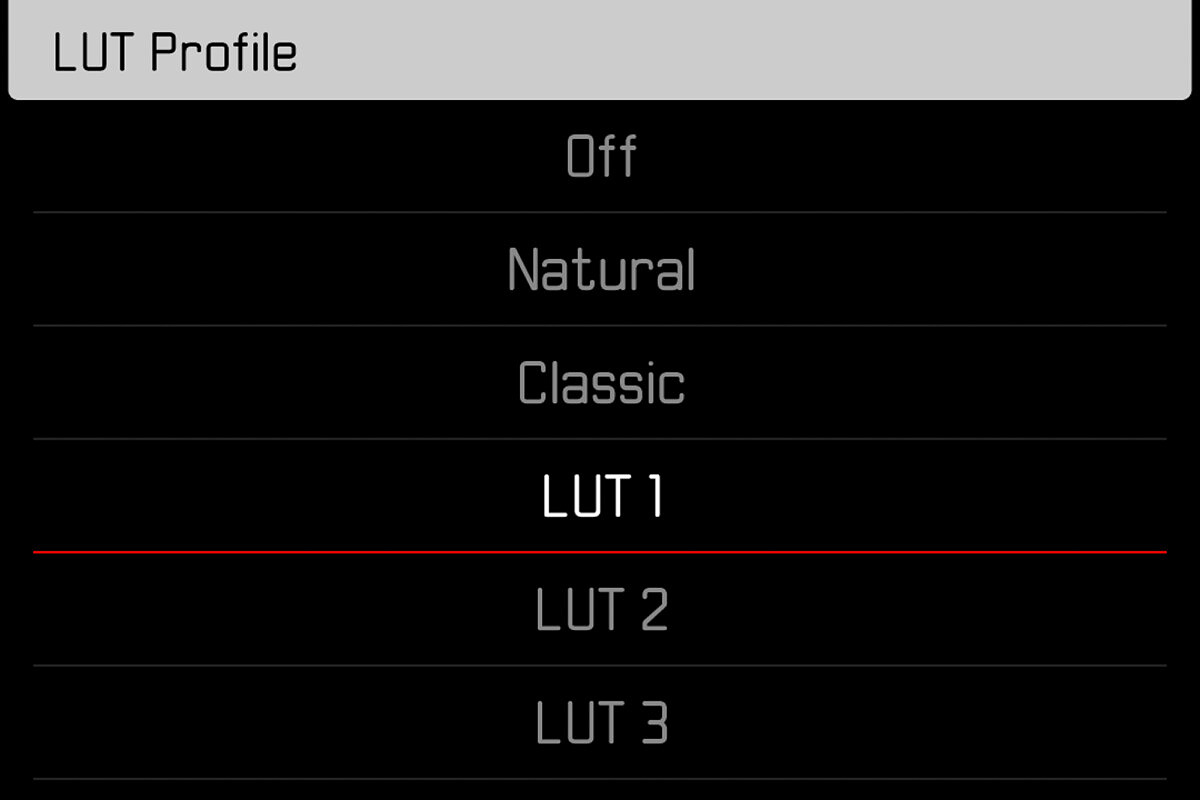
Rather than simply adding a single custom LUT, Leica has given the option to load up to three separate custom LUTs and provides granular control for each one. In the Custom LUT submenu you can select to apply the LUT on the EVF or LCD, but record the ungraded L-Log to an SD or out over HDMI to a recorder, apply the LUT to HDMI output if using a external monitor, or both. Kudos to Leica for such a nuanced, yet simple solution to LUT previewing.
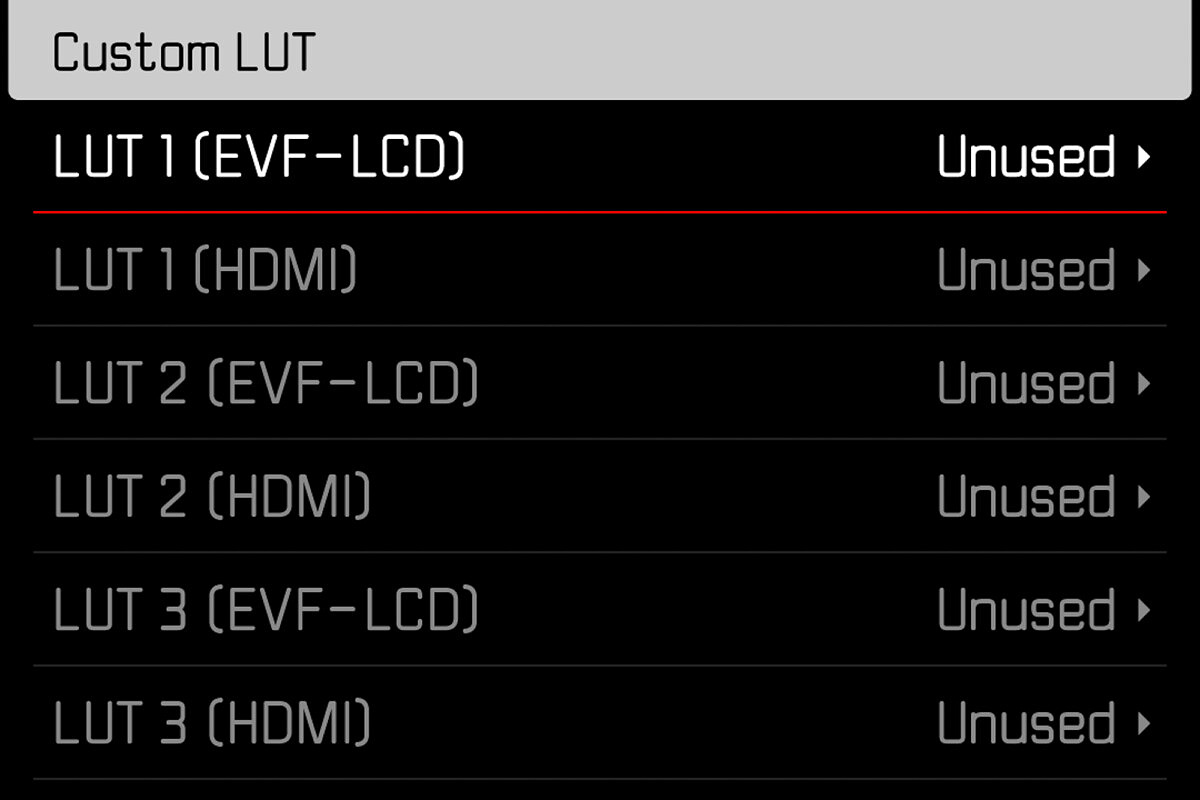
Enhanced Live View for better low light image composition control
Under Live View Settings, you can find the menu option for Enhanced Live View, which promises improved low light live view performance. We're not sure of how Leica was able to improve the already impressive low light live view, but no complaints here. What is also unclear is whether enabling this feature will impact battery life, so best to disable it when not heading out for some night phtoography.
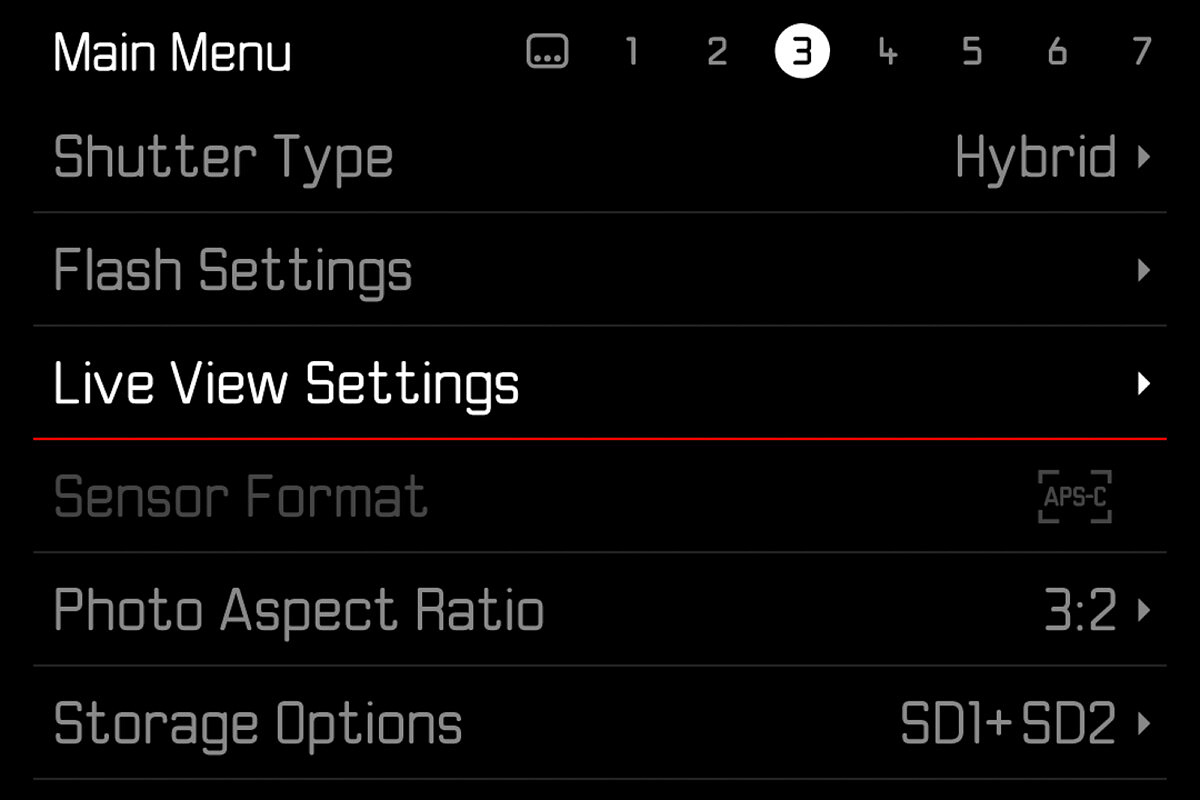
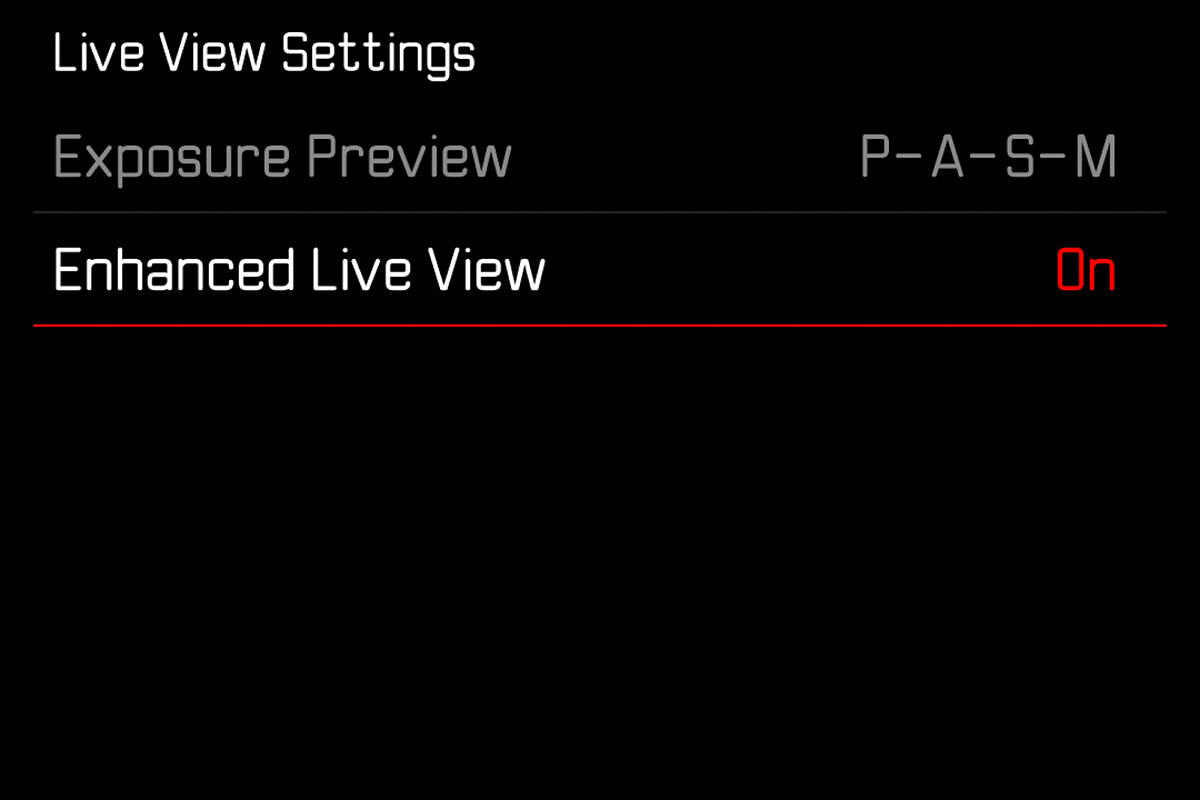
Image Overlay
This feature allows alignment of the camera position on the basis of a previous taken image, which displays in a transparent mode in the EVF or on the LCD. Compose and capture perfectly aligned photos based on a prior shot visible as an overlay in Live View. This function could prove useful for special effects or planned compositing in post. The image needs to be stored on your SD card and selected within the Image Overlay menu before activating the mode.
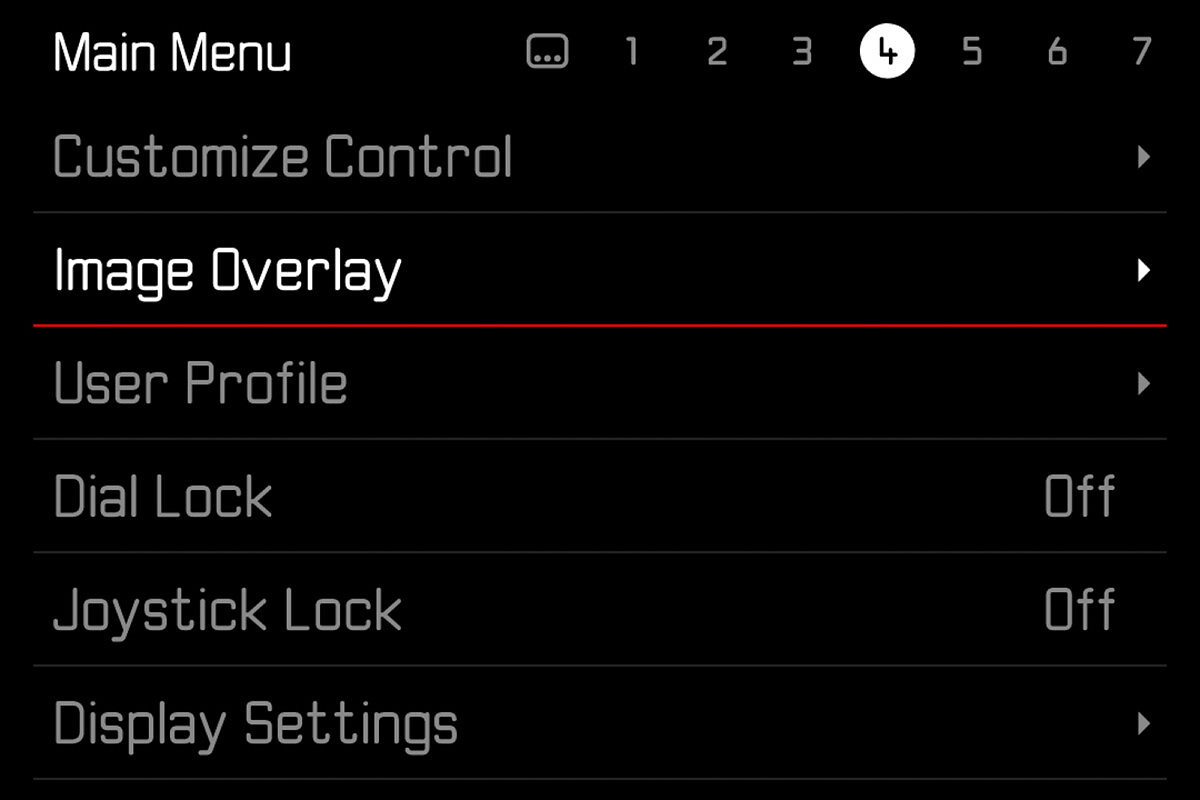
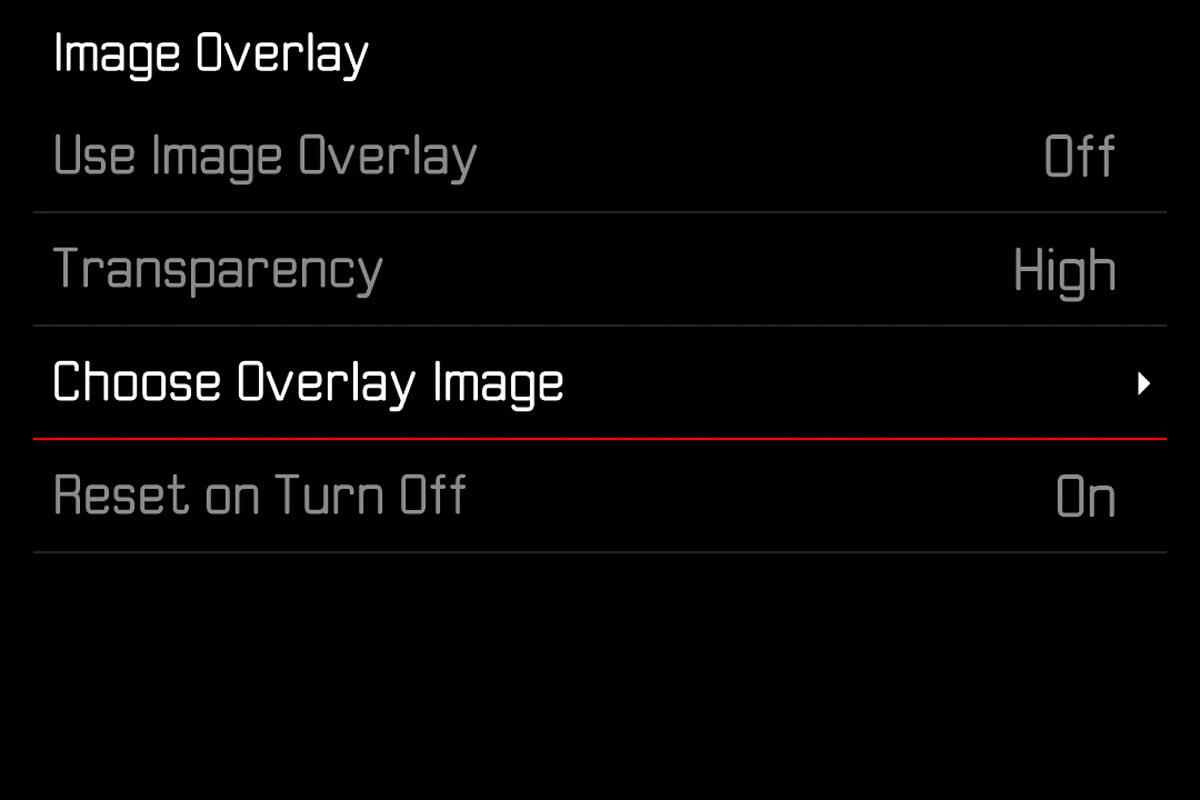
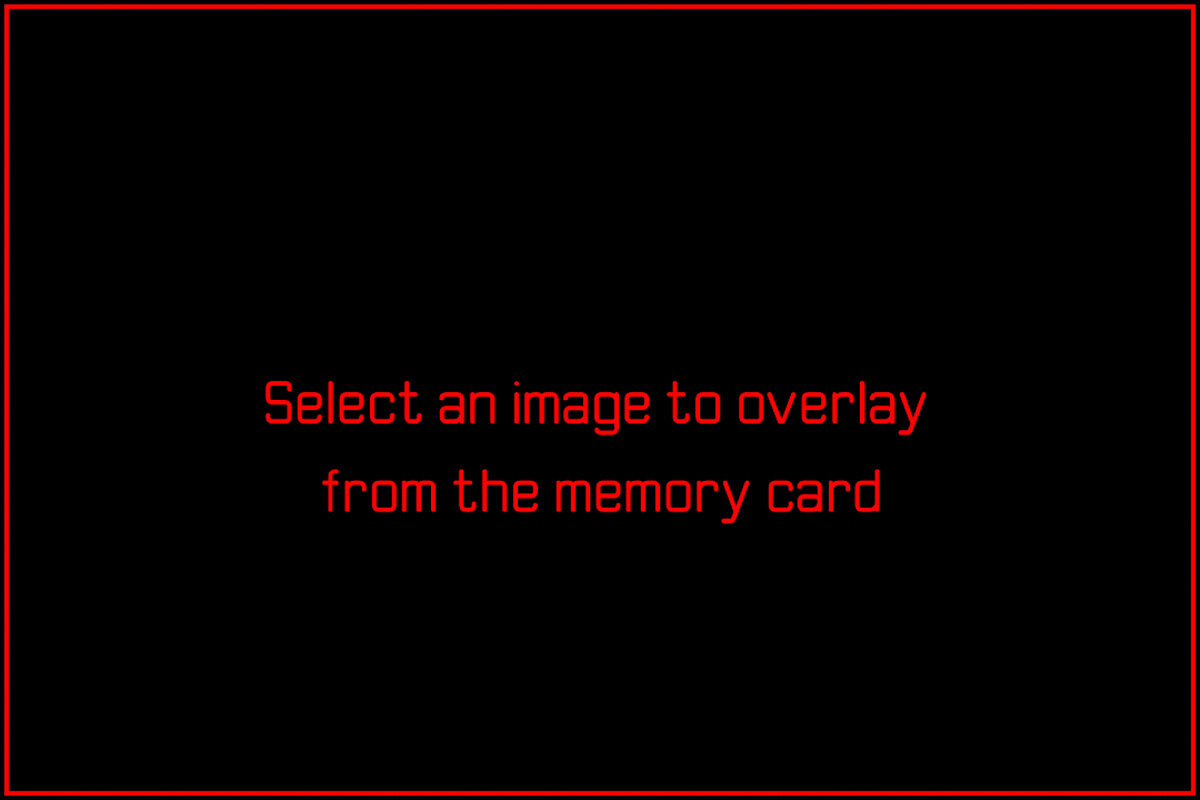
Automatic Follow Focus operation
Set up to three points of focus and let the camera pull focus through them with pre-determined timing for cinematic effects. This is an extremely cool feature, one that is usually only offered on expensive third-party motion control systems. Follow Focus can be activated from the Focus Mode menu. Once in the submenu, you'll set the focus points and the timing, then activate during filming. Of course, this only works with autofocus L-mount lenses.
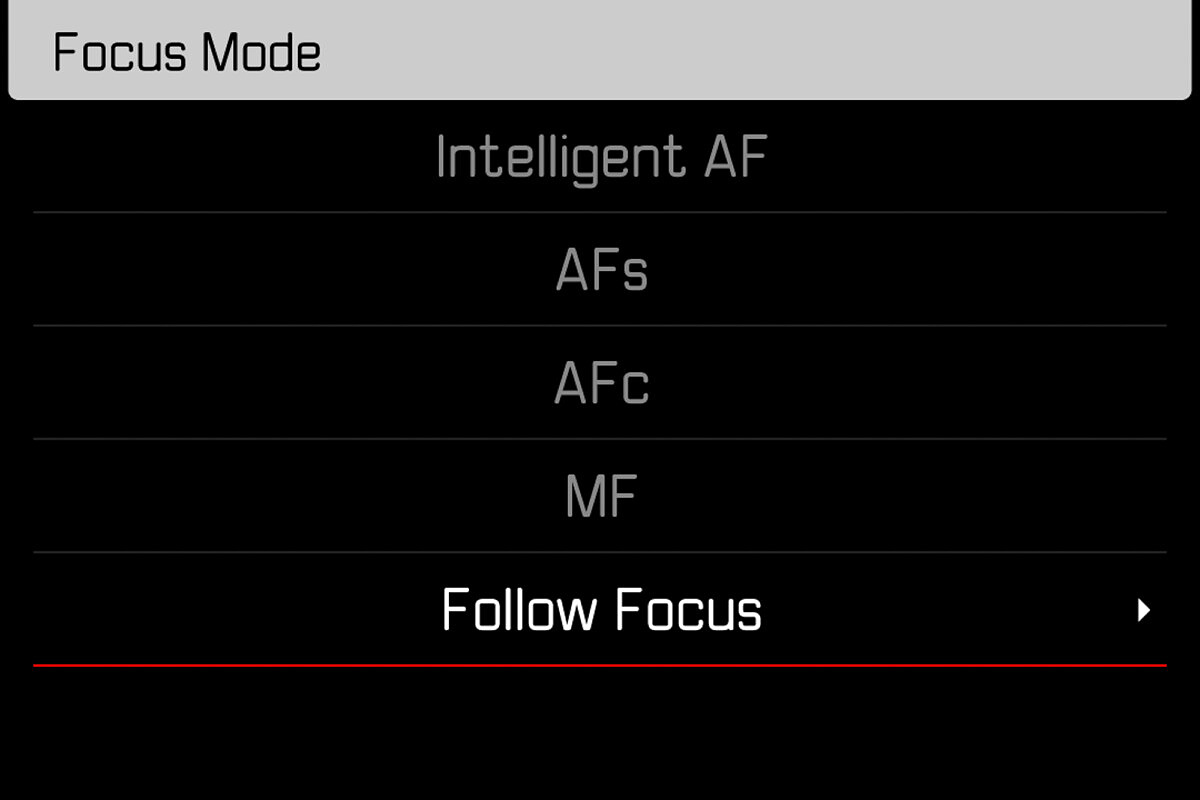
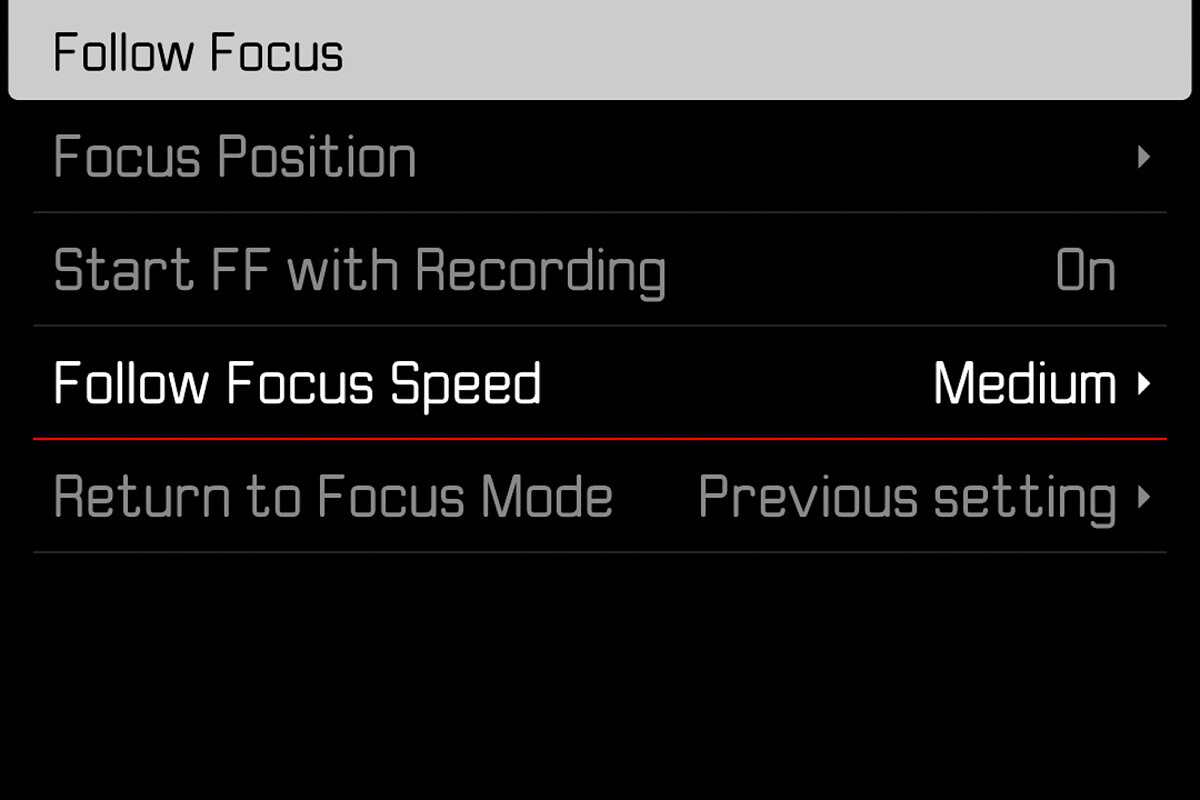
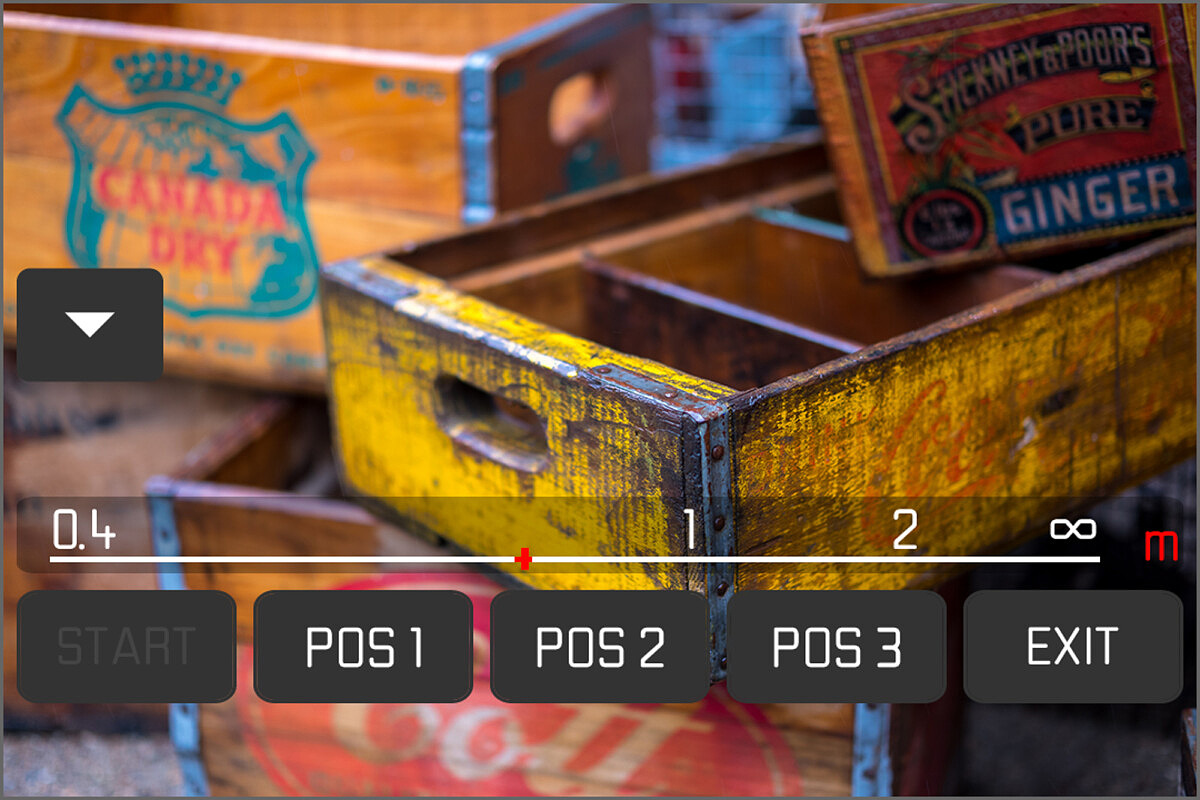
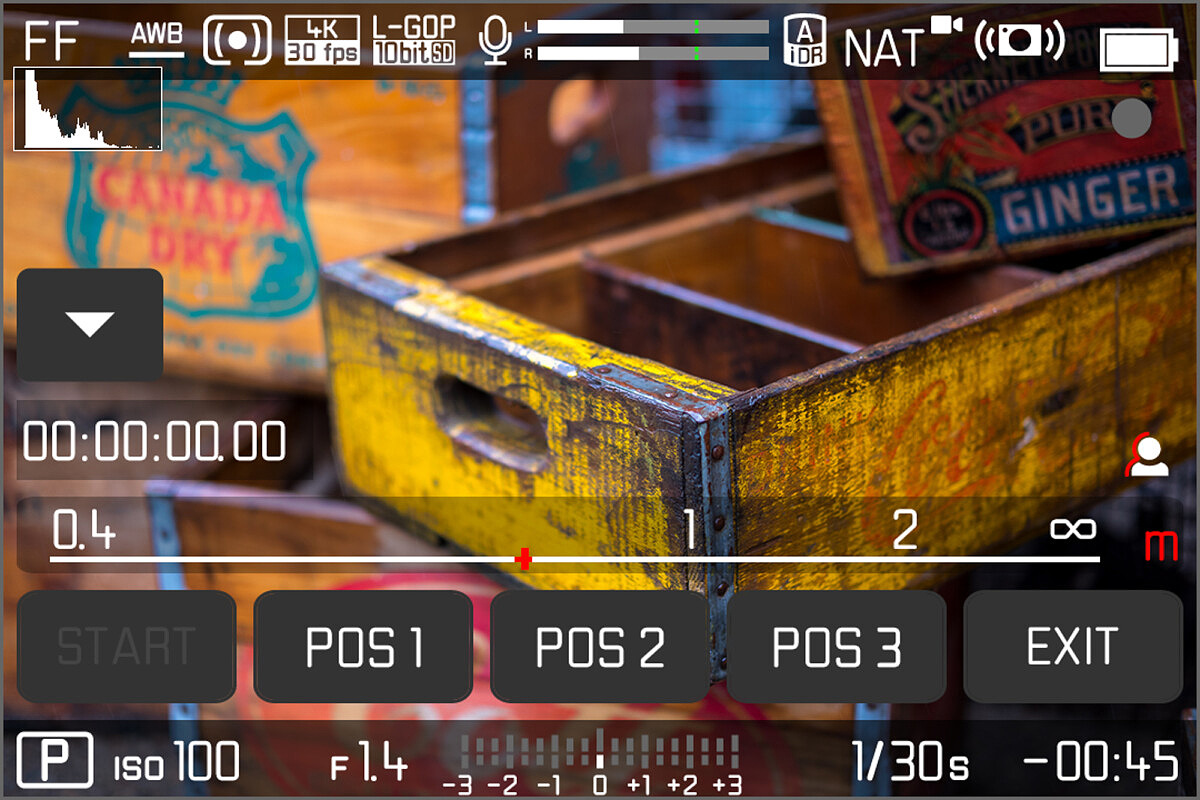
Wave form monitor for professional exposure control
In addition to the on-screen histogram, you can gauge video exposure using a waveform display for even more exposure information and detail. Unlike a histogram, which shows the aggregate tonal distribution for the entire image, a waveform display shows luminance values and volume across the frame. This is an extremely valuable tool for video and cine production, especially in complex scenes. Typically only found on external dedicated video monitors and recorders, having a built-in waveform in the SL-S is incredibly useful. The waveform overlay itself can be resized and dragged around to any position on the touchscreen, which is even more cool.
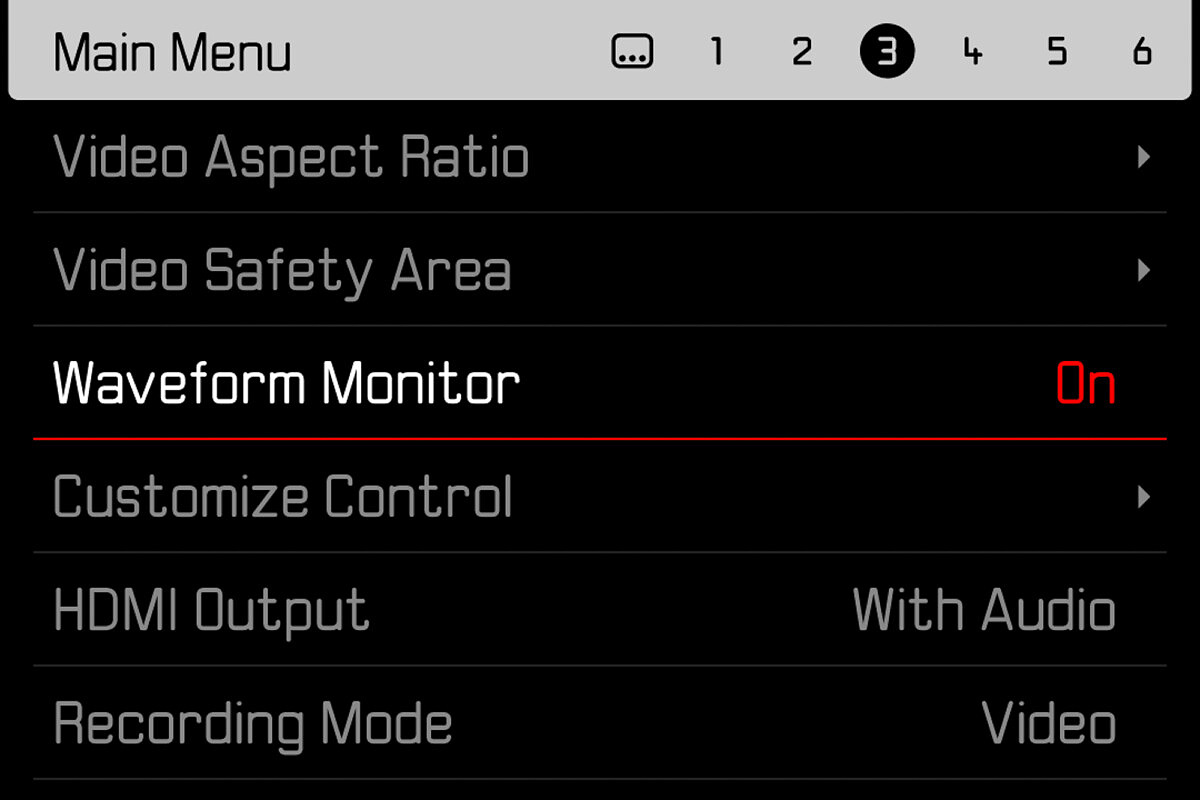
Color bars with audio signal as reference for correct color grading and sound control in post-production
Three different standard color bars can be selected and displayed on screen to be recorded to video. These color bars can be handy for multi-camera workflows or for simply color balancing monitors on a production set. In addition to the different color bars, you can also set the volume of the tone for sound normalization in post production.
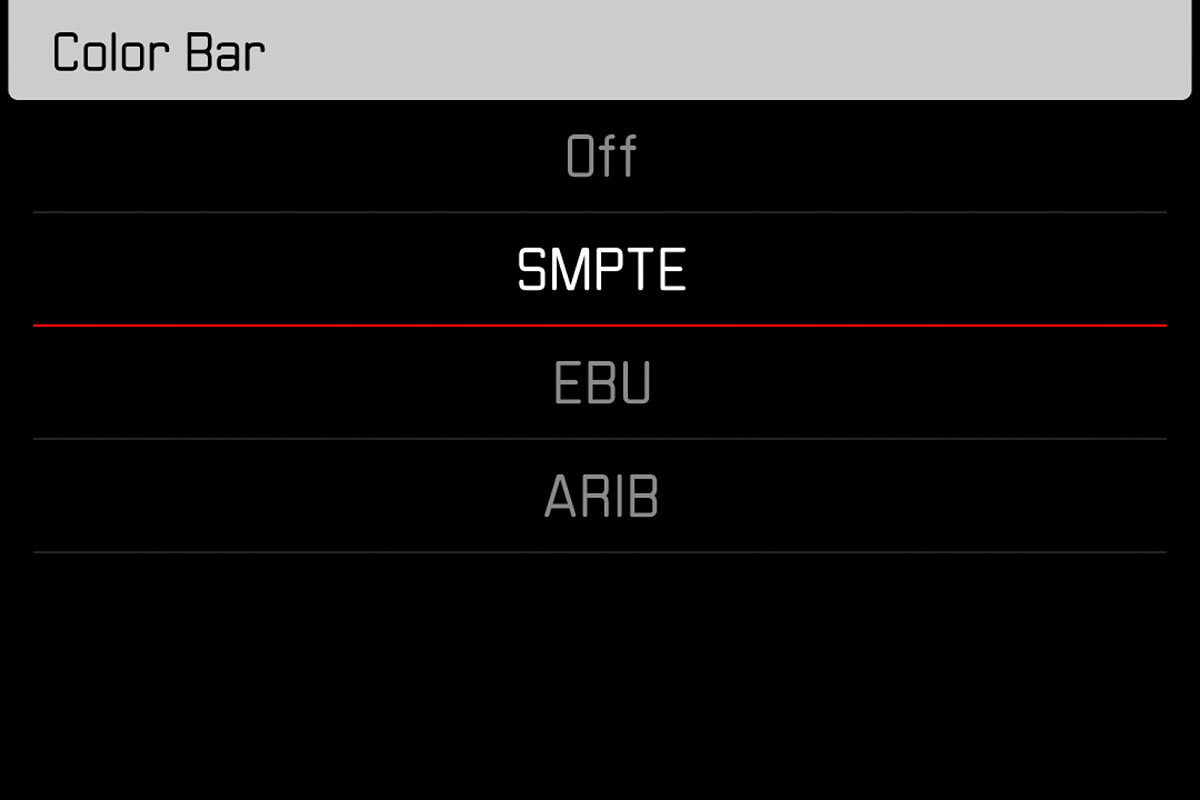
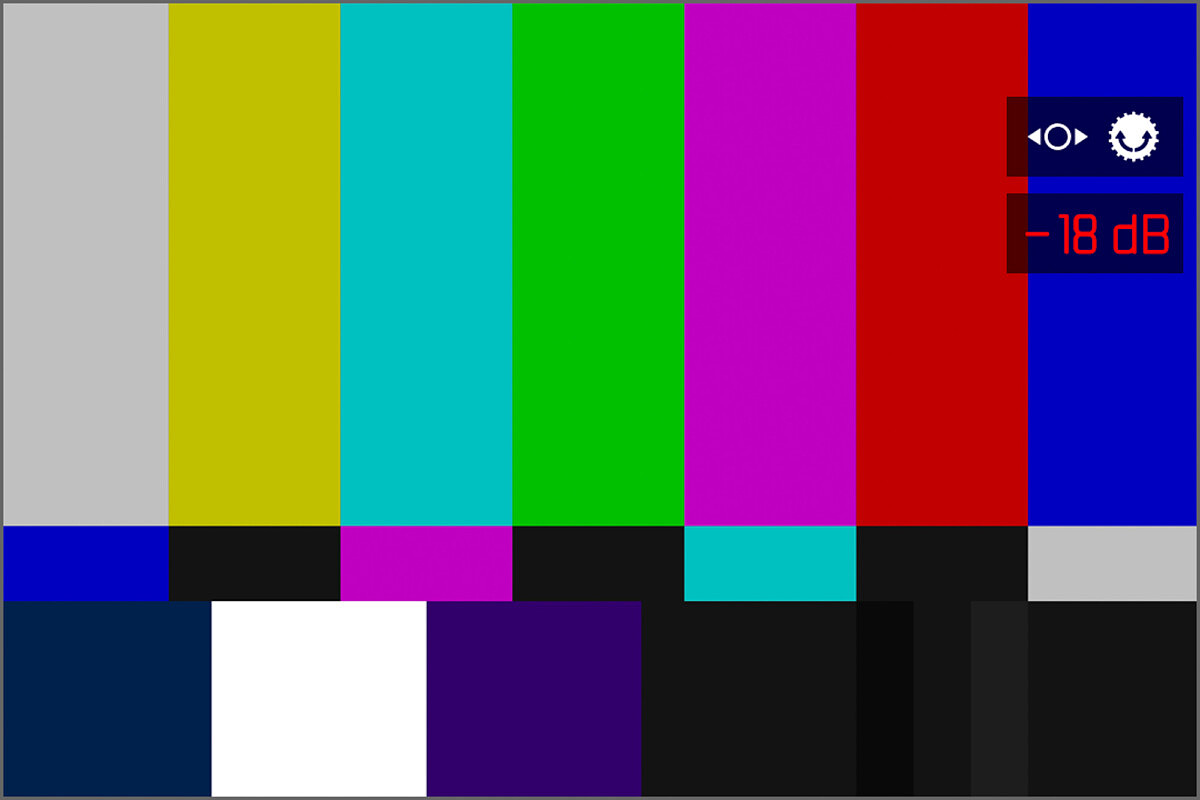
Tally Mode
Similar to using an Atomos Ninja, when you enable Tally Mode, referred to in the menu as REC Frame, a bright red outline around the perimeter of the screen displays when actively recording video, in addition to the red dot in the upper right corner. Some might find this distracting, but I think most people will find it a great way to know for sure if you are rolling or not.
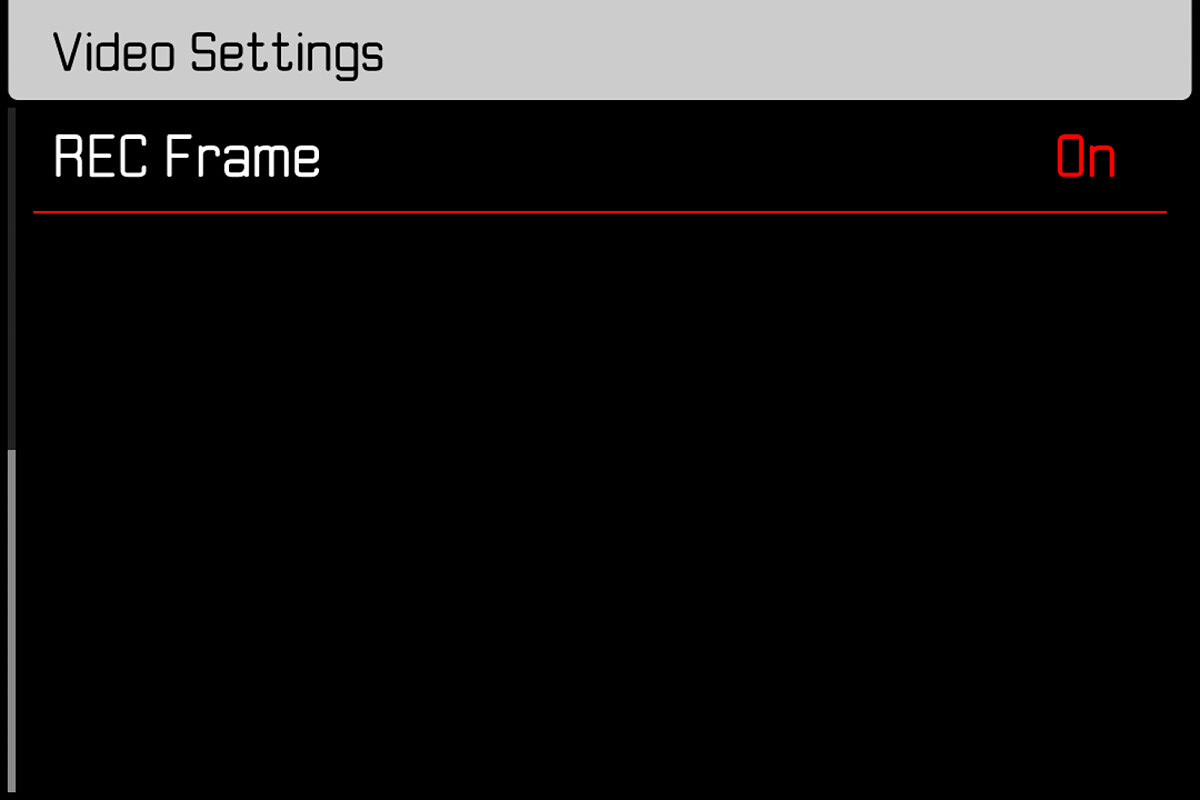
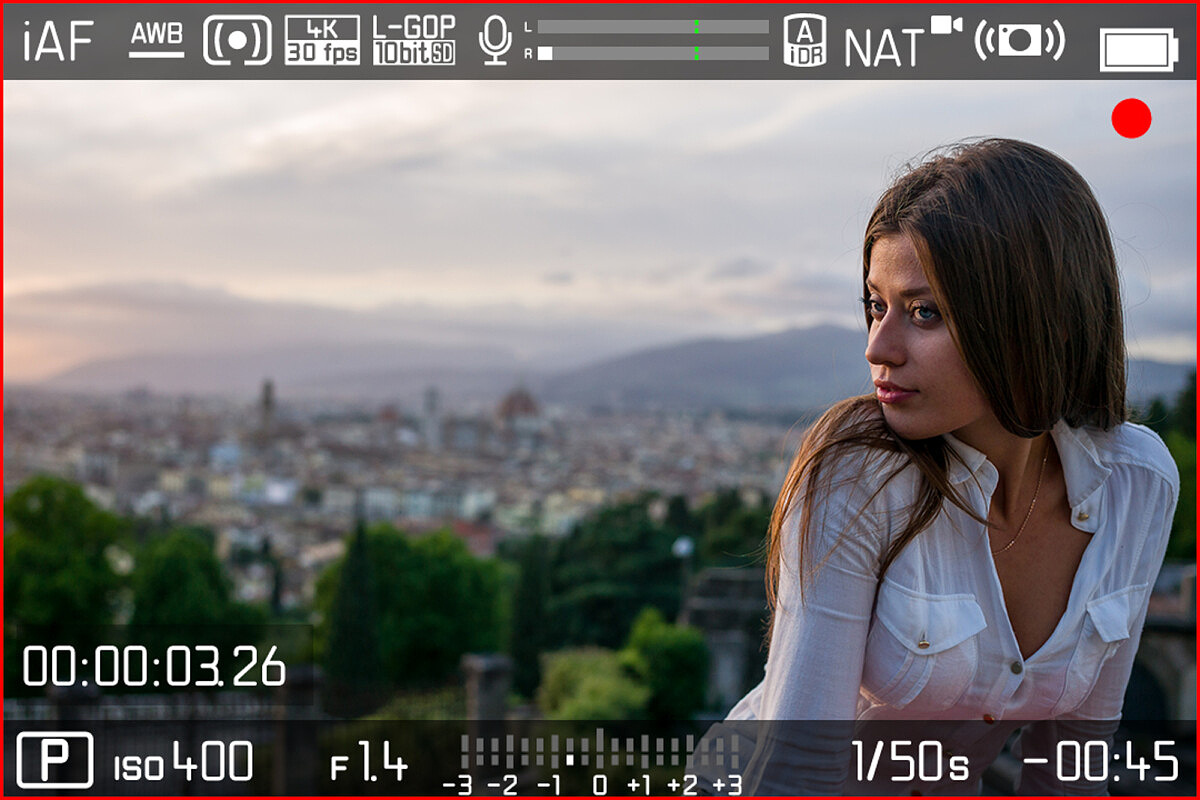
Highlight weighted metering
This one feels like it was made for me! We've long espoused the virtues of exposing for the highlights, but this has involved using highlight clipping warnings, test shots and frequent use of exposure compensations. But now, Leica has added a new metering mode into the SL2-S. When shooting in Highlight-Weighted mode, the camera will evaluate the full scene off the sensor and set the exposure to the brightest point in the image. This is an amazing addition and will be a huge timesaver for so many photographers.
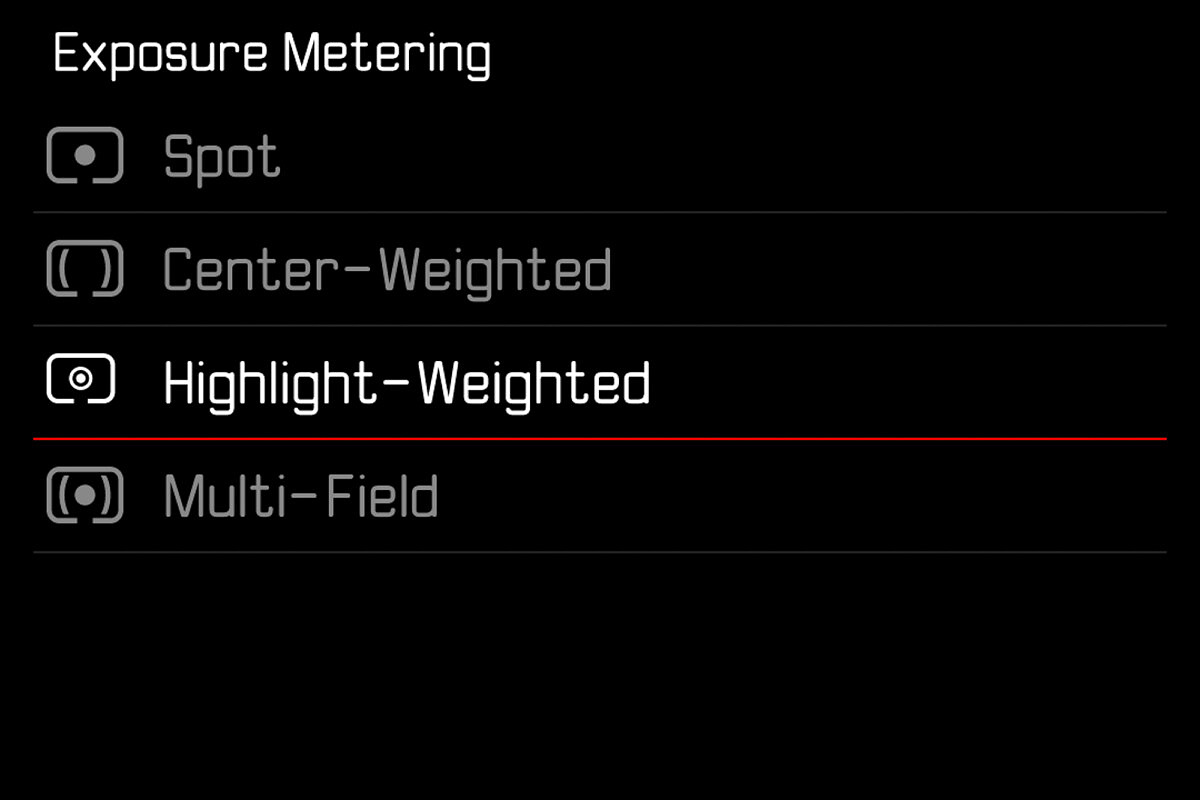
Dynamic-range control – iDR
The new iDR or Intelligent Dynamic Range will maximize shadow detail in JPEGs and in video captures. The setting is customizable with options for Auto, High, Standard and Low. While I'm not personally much of a JPEG shooter, this feature should prove quite useful for video applications where shooting in L-Log and grading later isn't practical or warranted. Here, iDR could be a very workable solution for high contrast scenes, or for run-and-gun in rapidly changing available light.
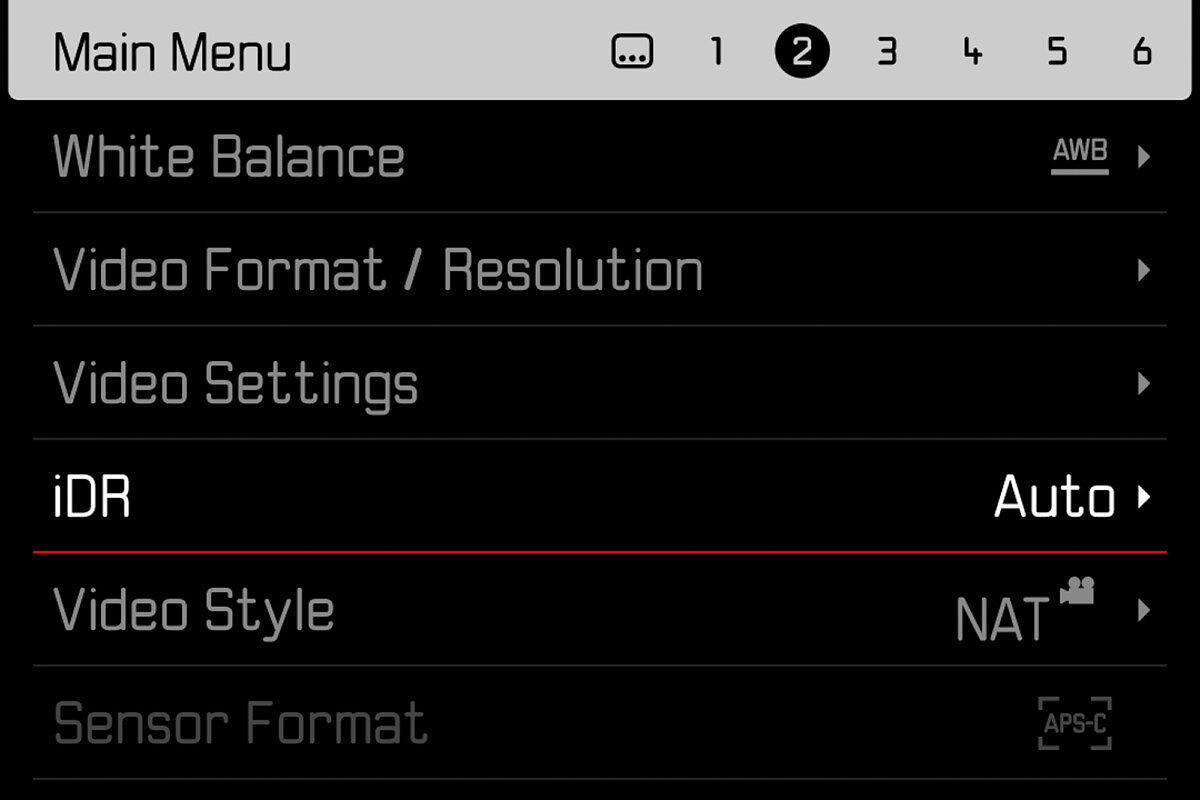
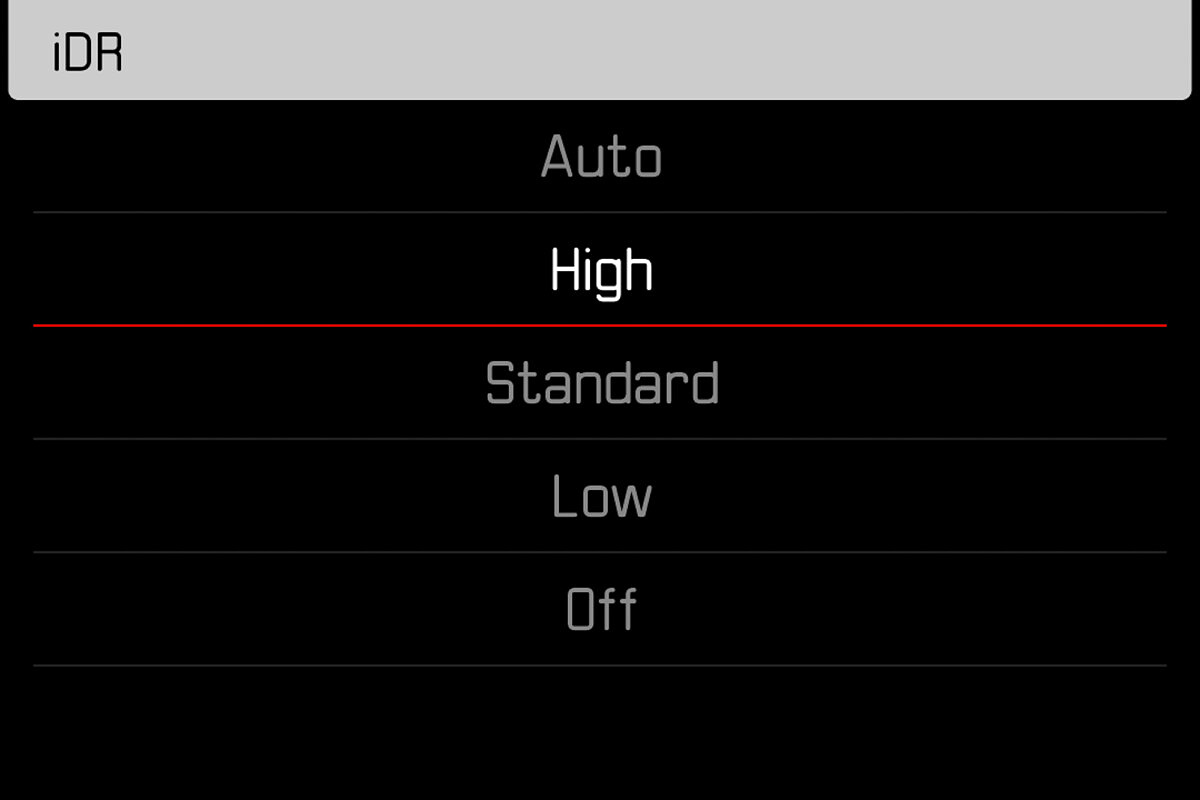
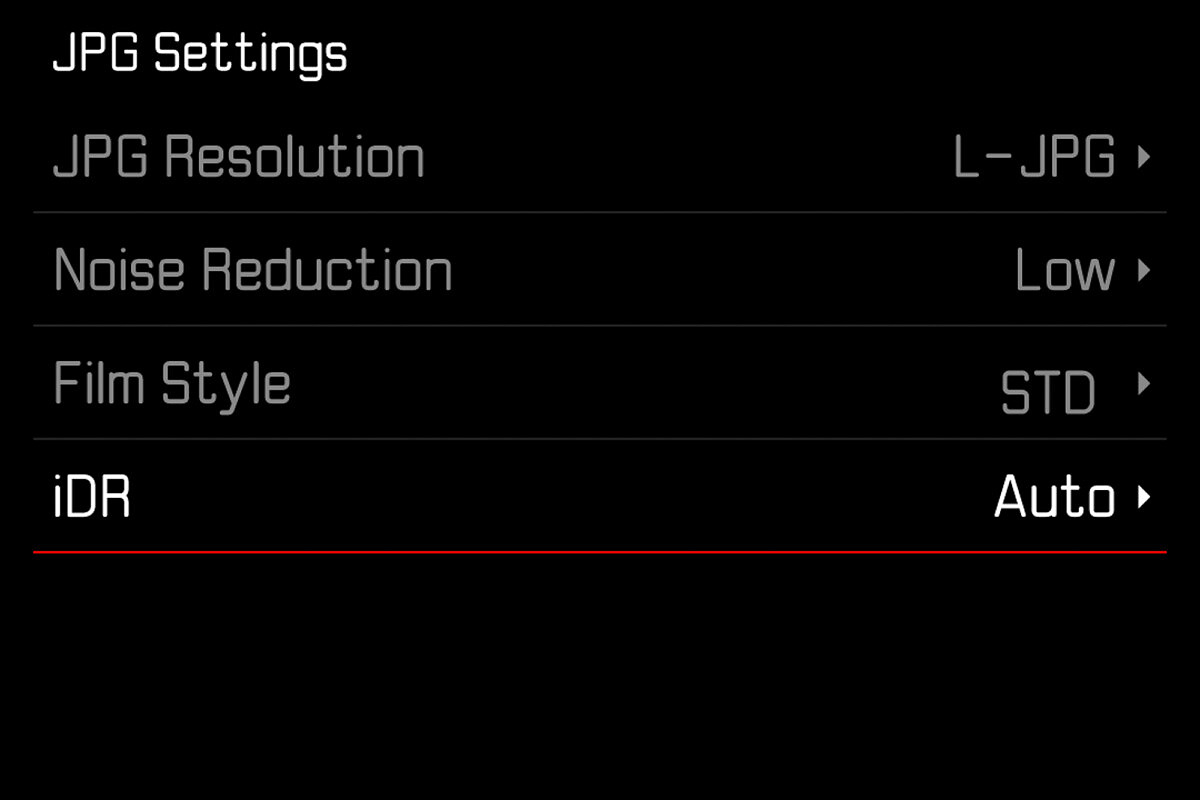
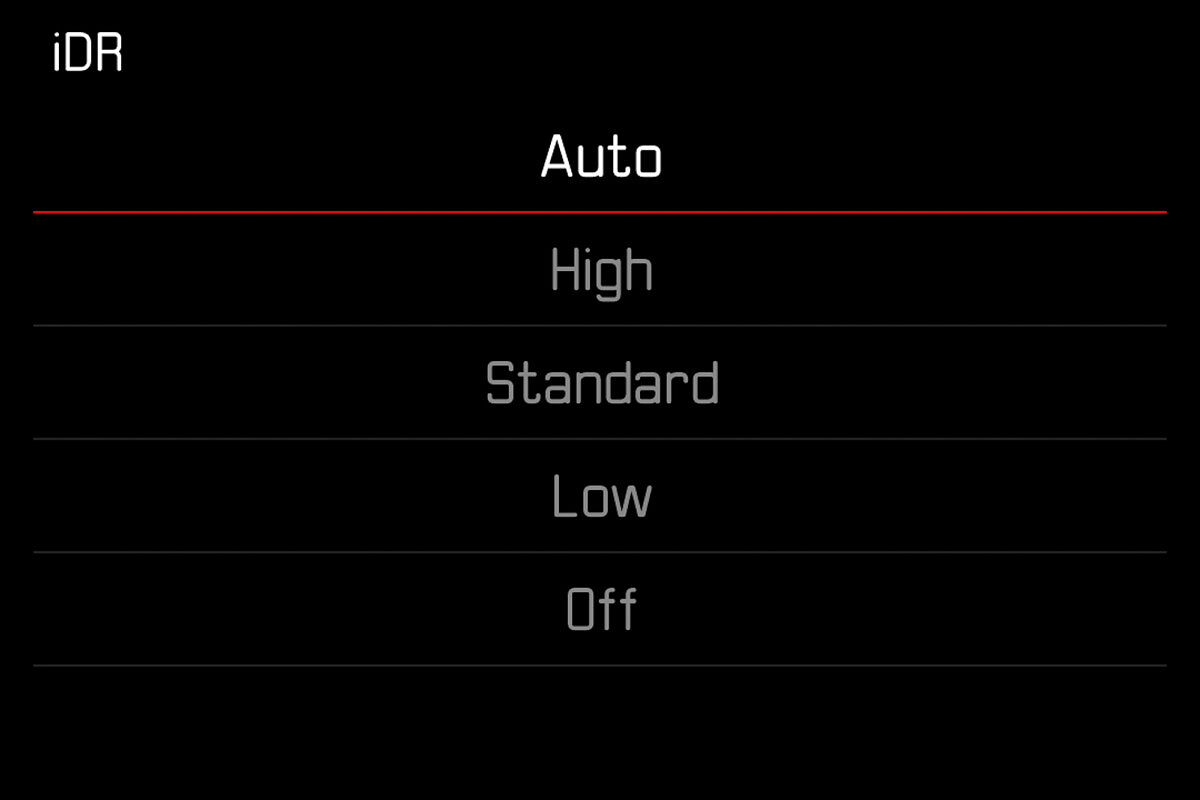
Highlight-shadow control. Precise contrast adjustment controls.
The film styles for JPEG and video shooting are even more flexible and adjustable than before, with controls for overall contrast, highlight and shadows, rather than just a global contrast setting. Just like iDR above, the new adjustments will not impact DNG files, only out of camera JPEGs and non-gamma video footage.
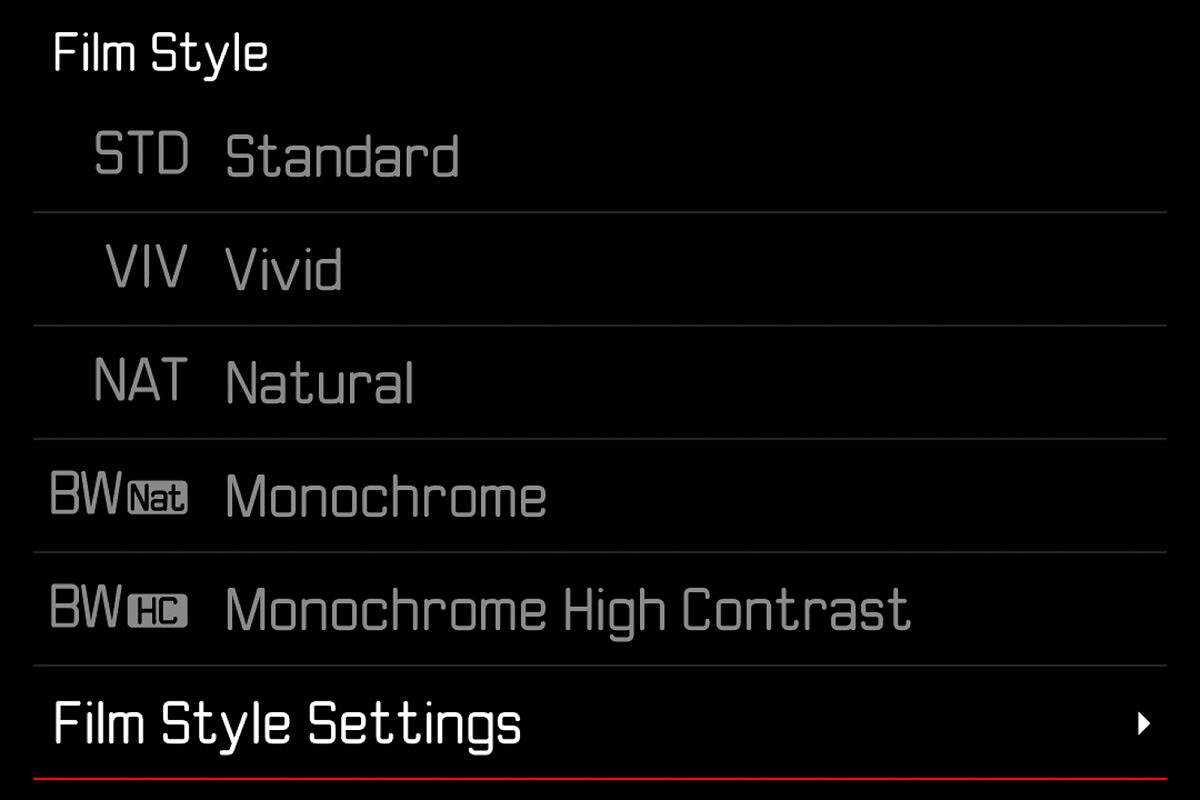
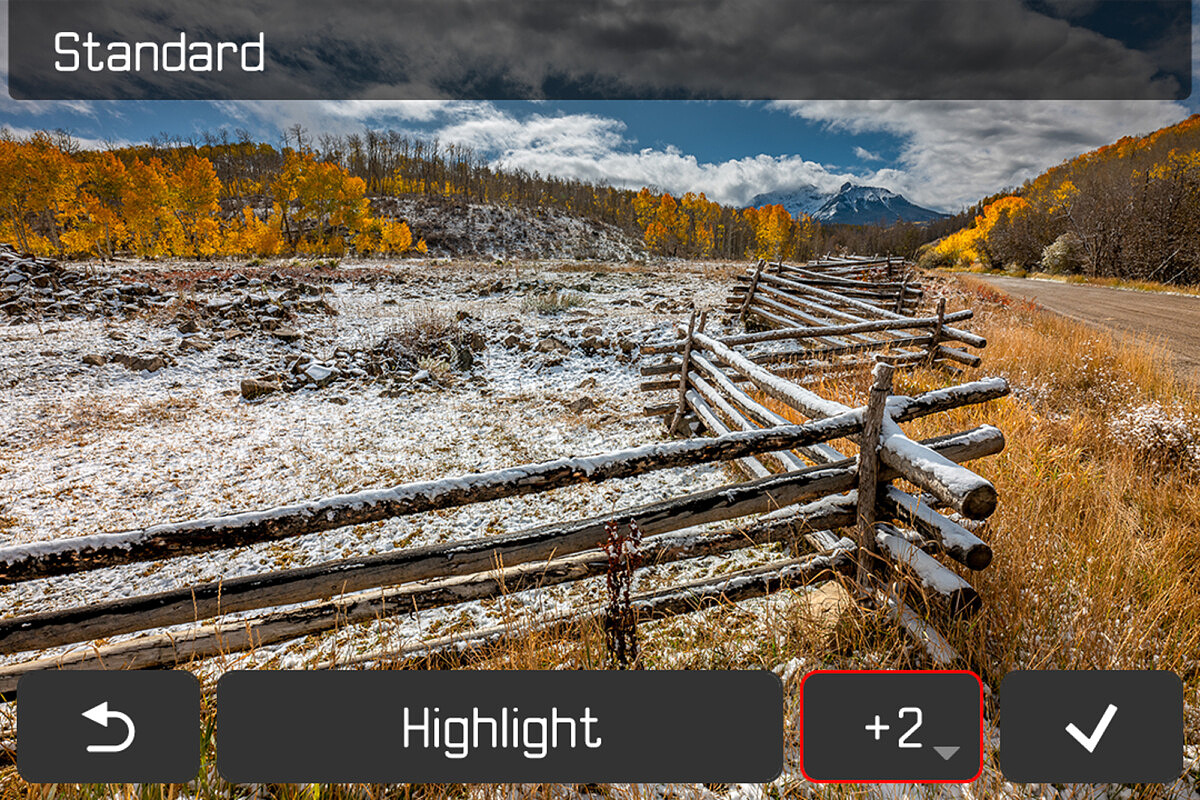
Full HD submenu for Slow Motion speeds
For easier navigation, the ultra-high speed video framerates have been moved to their own submenu. Here you'll find 100, 120, 150 and 180 fps. And yes, 100 and 120 can also be found in the regular FHD submenu.
New icons for video formats
A subtle, but welcome change comes to the design of the menu on the SL2-S. Firmware 2.0 introduces a much more informative icon in the menu, Previously, the resolution and frame rate have been displayed, but the storage information was a little more vague, only showing MOV or H264. The new design leads with the standard video resolution and framerate and adds more information, like encoding, bit rate and whether the video is being stored internally to an SD card or externally over HDMI.
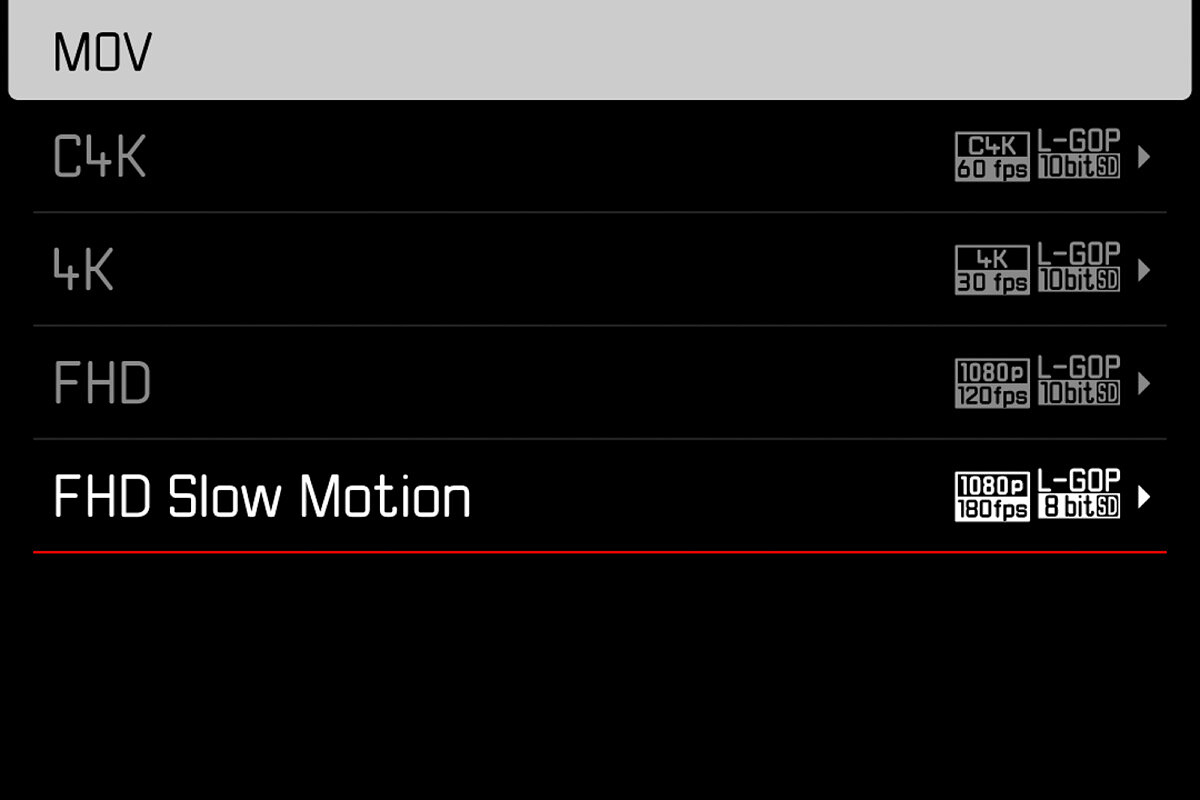
Pixel Mapping function
The Q2 and Q2 Monochrom recently received firmware updates that allow users to manually remap any hot pixels on camera sensors without sending for service. While this isn't a widespread issue by any means, it's still a nice feature to have if needed.
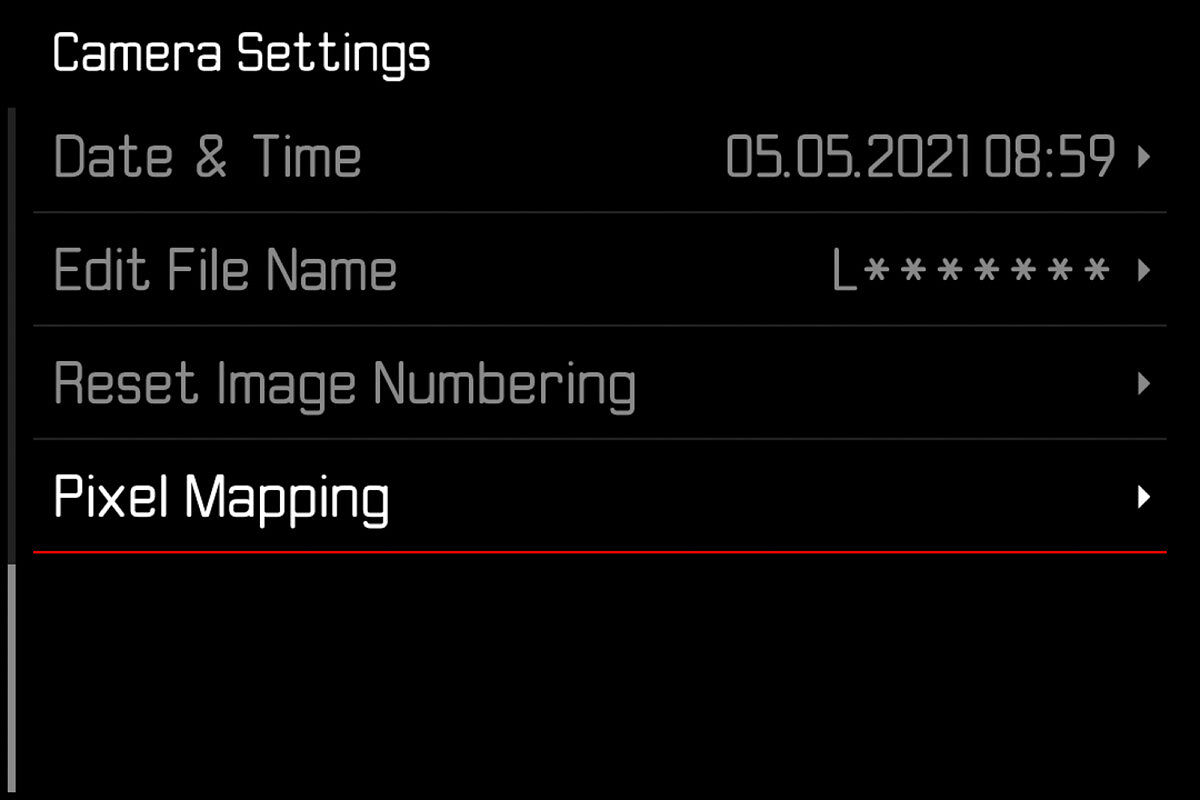
When will these features be available for the SL2?
Seems like the SL2-S is getting all the love, and all the updates. What about the SL2? Fear not. Leica is hard at work, testing out the new SL2 firmware update and expects to have it ready by this summer – so just a couple months. Stay tuned. Once the SL2 firmware is released, we'll be doing a thorough rundown on it.
Press Release
Firmware version 2.0 for the Leica SL2-S:
New features and optimised video mode performance
Wetzlar, May 4, 2021. Leica Camera AG releases a firmware update for its most recent system camera, the Leica SL2-S. As a result, the camera will now offer a number of new features – as well as a noticeably improved performance, especially in the field of video recording. These enhancements, which were first announced at the camera’s market launch, are now available to every owner of a Leica SL2-S. They include a new autofocus algorithm that significantly improves focus tracking along with the camera’s eye, face, head and body detection. An Image Overlay function (selectable in the camera menu) allows the camera position to be aligned on the basis of a previously recorded image, which is displayed as a transparent overlay in the EVF or on the LCD. Composing images in extremely low light will also be made easier by the update’s new Enhanced Live View feature.
However, the (already highly advanced) video functions of the SL2-S are where this firmware update truly comes into its own: in addition to the camera’s existing recording modes and ability to capture 4K 30p/25p 4:2:2 10-bit (internal and external) videos, the Leica SL2-S will now also capture 10-bit recordings in the HEVC (High Efficiency Video Coding) video compression standard (h.265) at 4:2:0 and frames rates of up to 59.94p. There will also be the option of recording Long GOP 150Mbps footage onto an SD card (as opposed to the previous 400Mbps 10bit 4:2:2). The upload of individual Look Up Tables (LUTs) to the camera via the SD card expands the creative possibilities in video mode. Furthermore, the new automatic Follow Focus allows the user to define a maximum of three focus points for automatic focus shift during video recording.
In order to ensure a pro-level exposure evaluation, the SL2-S will now offer the option of displaying a waveform monitor. In addition, a colour bar with audio signal will be available as a reference for correct colour grading and sound editing in post-production. To minimise the risk of data loss in the event of power failure, the Segmented Video function allows you to record footage in one-minute sub-sequences that are stored as individual files within the camera.
These are just some of the enhancements now available to owners of a Leica SL2-S. The full list of added features can be found in the firmware installation guide, available at https://en.leica-camera.com/Photography/Leica-SL/Leica-SL2-S/Firmware – which is also where the new firmware update 2.0 for the Leica SL2-S can be downloaded free of charge.

Highlight weighted metering
I want it for all Leica cameras.
Jack
Agreed! This is a game-changer for landscape photography and from-the-hip street shooting alike.
Did I hear correctly that Leica was going to release new firmware for the SL-2 lenses that would allow for adjustment of focus throw? I have been waiting for this but seen no announcement of such. Thanks in advance…Peter
The lens firmware is already available.